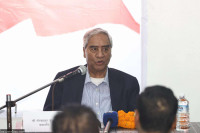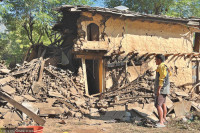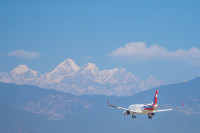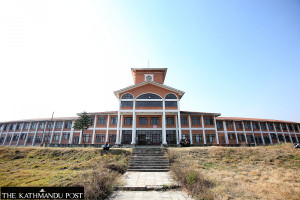Editorial
Up in the air
How many more planes must come down before we in Nepal start taking air safety seriously?
Whenever one boards an aircraft in Nepal, there is always that doubt at the back of the mind. Our skies here are far from safe. After all, as of July last year, 914 people have died in 105 different air accidents in Nepal. Between December 1989 and January 2024, when 52 planes came down, Nepal ranked 33rd among 207 countries for air crashes. In the past three years alone, Nepal has seen eight deadly air disasters. Separately, 92 people have been killed in 40 helicopter crashes in the past 63 years. As a result, a recent high-level government committee report published on the Civil Aviation Ministry’s website has listed Nepal among the “most dangerous countries for air travel” in international safety assessments. Nepal’s airports have failed to meet safety guidelines as well as travellers’ expectations. The need for reform is urgent.
Even as air travel is closely associated with tourism and the larger economy, successive governments have failed to effectively manage the sector. Over time, governments have introduced laws on aviation and safety standards, accompanied by repeated assurances of reform; however, these efforts have not resulted in a reduction in the number of domestic and international accidents. Sometimes, laws are drafted, but not enacted. Robust monitoring, swift reforms and proper coordination are lacking. Concomitantly, authorities have ignored the recommendations of aid agencies and aviation experts, including the United Nations aviation watchdog International Civil Aviation Organisation, to bifurcate the Civil Aviation Authority of Nepal (CAAN), as it currently undertakes the roles of both service provider and regulatory body, creating a conflict of interest.
International airlines have also pointed out that they were compelled to operate flights to Bhairahawa and Pokhara although much-needed facilities and safety systems were lacking in both airports. Their complaint is valid. While the need to start operations from these two airports cannot be overstated, operating flights without paying attention to aviation safety and technical expertise could invite another disaster. Similarly, even the ground-handling services are far from effective, causing confusion in flight operations.
Again, the image of Nepali aviation will continue to be marred if these recurring safety concerns aren’t addressed with urgency. It is due to these safety concerns that Nepali flag carriers have been barred from entering EU airspace since 2013—and the ban has continued this year. In order to regain the confidence of both domestic and international passengers, aviation governance must first be reformed by splitting the country’s civil aviation authority into two autonomous bodies. Similarly, as recommended in the report, it is vital to carry out safety and infrastructure assessments as well as hire qualified technical experts and professionals to manage airports.
Besides these reforms, there is a need to tighten the lax regulatory system. The sector has suffered years and decades of corruption and mismanagement, with government representatives happy to look away if they get their share of the illicit money thus made. In the process, they jeopardise countless lives. An economy so dependent on remittances and tourism also cannot afford to keep compromising on the safety of air travellers. The question is: How many more planes must come down before we in Nepal start taking air safety seriously?




 16.12°C Kathmandu
16.12°C Kathmandu












%20(1).jpg&w=300&height=200)

